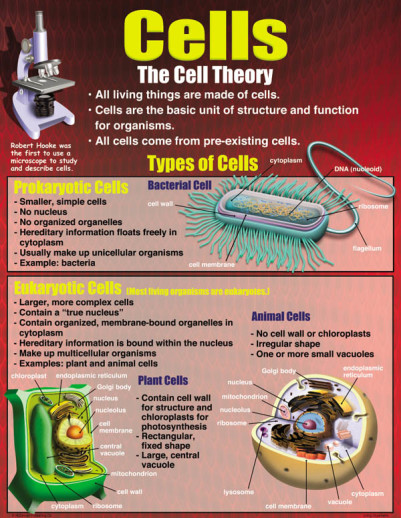We use cookies to make your experience better. To comply with the new e-Privacy directive, we need to ask for your consent to set the cookies. Learn more.
Living Organisms Teaching Poster Set
Posters are a fun way to set the tone for a unit and as a visual reference tool for your students, whether in a classroom or at home. This set of four, colorful 17" x 22" posters includes: cell theory/types of cells (plant/animal/bacterial), tissues/organs/body systems, 6 characteristics of living organisms, and the 8 classifications of living organisms. Each poster includes illustrations and text. Made from sturdy cardstock, this set also includes a reproducible worksheet to go with each poster. ~Sara
These posters are packed with information about cells; the functions of tissues, organs, organ systems, and systems of the human body; characteristics common to all living organisms; and organism classification. The teachers guide contains additional information a teacher can use to expand students knowledge of these topics.
| Product Format: | Other |
|---|---|
| Grades: | 4-9 |
| Brand: | McDonald |
| EAN/UPC: | 789892001547 |
| Length in Inches: | 22 |
| Width in Inches: | 17 |
| Height in Inches: | 0.0625 |
| Weight in Pounds: | 0.4 |
Be the first to review this item
- Start typing and we'll see if it was already asked and answered.
- If there aren't already some matches, submit a new question.
- You'll get fast answers from customers who really own the item(s) and from our product experts. (About half the time you'll get an answer in under 2 hours!)
- Which items will best meet your needs
- What customers who own an item think of it
- How to use, fix, or take care of an item
- Product information
- General advice related to the types of products we sell
- Our store policies
For questions about an order you have placed, please contact customer support directly.

















I teach Living Environment and posters seem perfect for class display.
Because I am a Science teacher
Good Price, Paying for it myself.
I think it is a good summary for my students